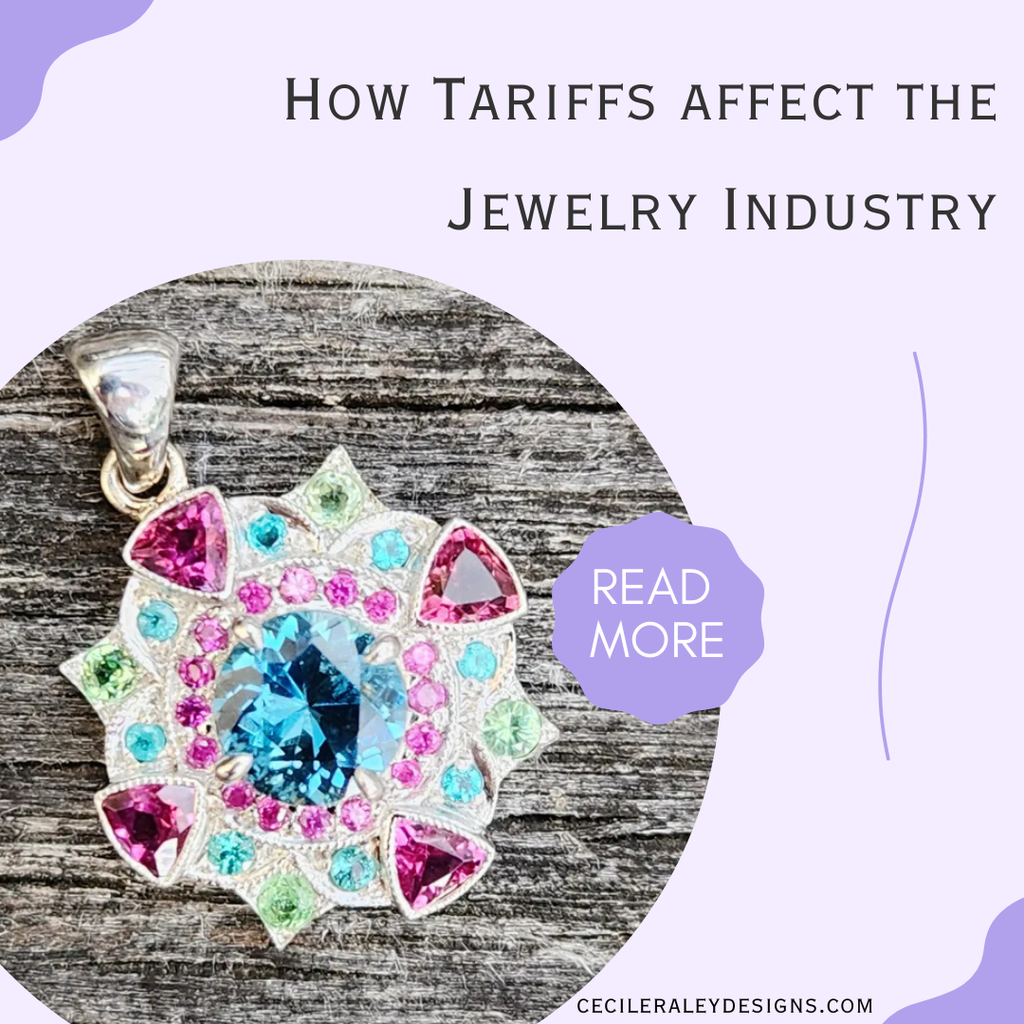How Tariffs Affect the Jewelry Industry

As you probably know by now, at CRD we make all our jewelry here in the United States. Each of our manufacturing partners – from casting to jewelry work to setting and polish – is located in Manhattan, in the Diamond District.
Yet, we are not exempt from the consequences of what the media calls the “trade war:” the temporary and permanent changes proposed, considered, and executed regarding tariffs. In other words, this involves a 10% or more upcharge on all imported goods (depending on where they come from). Nothing in the world is made in a vacuum. Gold, gemstones but also tools and supplies for the trade travel around the world in various states before you can hold the result in your hands. And as they travel internationally, they will pick up price increases along the way in the form of taxes, duties or tariffs. The article here goes into greater depth on this.
Consider gold. While the United States has domestic supplies of gold (for instance, in Nevada), some of its gold is imported from Canada (as well as South Africa and Mexico among others). The United States also refines much of its gold, but 70% of the world’s gold is actually refined in Switzerland (and the US has to import 25% of the refined gold it needs from there). Before it turns into your favorite jewelry item, therefore, gold may have already traveled around the world, i.e. from Canada to Switzerland to the U.S.

Platinum is also mostly imported as the US has almost no domestic platinum mining. The world’s largest platinum producer is South Africa, the rest is imported from various other countries.
Even for those of us who make and use our own castings, our pieces of jewelry are not entirely made here. This is because not all of the parts that go into a piece of jewelry are actually cast. Bails, posts for earrings, earring backs, jump rings and wire are examples of findings that almost any jeweler uses and which are generally not cast but bought pre-manufactured. Parts can be manufactured in Jaipur, Hong Kong, Bangkok, before they are shipped to wholesalers in the United States. Some large wholesalers manufacture here, many do not. Like most other jewelers, we do not necessarily know where exactly an earring post was made. This means that a gold bail may have started in Canada as gold, becomes refined in Switzerland, is made into wire or a post in Bangkok, and then comes to the United States (or somewhere else) for assembly.
Another important type of jewelry supply that we rarely consider are the chemicals needed in jewelry work such as pickle, rhodium, and other acids used to clean jewelry after soldering. These are in addition to the tools we use: polishing equipment and wheels, sieves, tweezers and loupes and scales, casting materials, and even packaging. Our packaging comes from Rio Grande and Westpack for instance. Westpack is located in Denmark. High quality loupes and tweezers are made in Switzerland, the lower quality tools usually come from China.
3D printers, another modern jewelry staple, are made in China, the Netherlands and the US, among others places. Rhodium, used to plate white gold, meanwhile, is 80% South African, and secondarily Russian. None of it comes from the United States, but it is used in just about every piece of white gold jewelry sold here.
And of course, last but not least, most gemstones these days do not come from the United States (and even less so from Europe). Mining in the US is (a) subject to a number of environmental restrictions, and (b) expensive in terms of equipment and labor. Many areas are also mined out, or the yield is too small to be considered worth the labor costs of mining it.
This is why we now source pretty much 100% of colored gemstones from South America, Africa and Asia (diamonds are also 100% imported – there's no diamond mining and hardly any diamond cutting in the US).

Some countries export the gemstone rough directly, others, notably Sri Lanka, cuts all gems within the country. Other major cutting centers are Bangkok and Jaipur (India cuts 90% of the world's diamonds for instance), and for more commercial cutting like cheaper beads, materials get shipped to Hong Kong for processing. Gemstones and diamonds can easily take a trip around the world before they find their permanent home with a private jewelry buyer.
If you think about it, therefore, there’s no such thing as a piece of jewelry that is truly made in the USA. The supplies and parts needed for it not only come from all over the world, they also travel the world in various iterations before they arrive here in the form in which they may become part of a piece of jewelry or be part of the manufacturing process.
Can this be changed? The answer is a qualified yes. In principle, anything can be made anywhere, including all of its parts. The qualifier is the cost. Manufacturing companies usually look for cheapest and most effective ways of making their product. This is how free international trade started in the first place. You make this, I make that, and then we trade so each of us gets their thing for a little less – to put it in a pedestrian way. But if the trading itself has a price to it, it will raise some prices. And with regard to some items, such as rhodium and platinum, the price increases are permanent as some raw materials simply cannot be found in the country in which they are needed or used.
